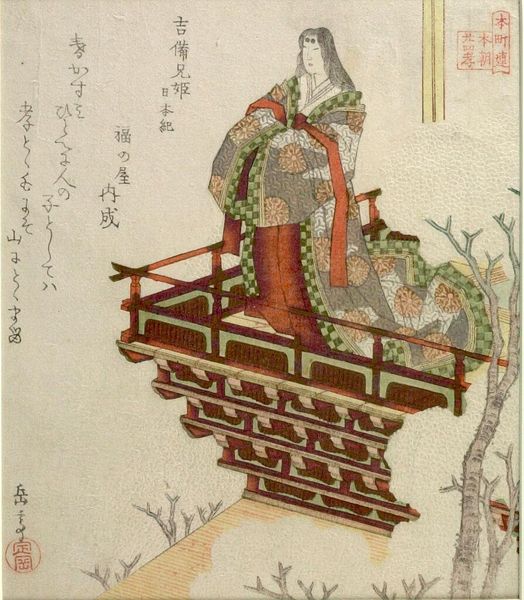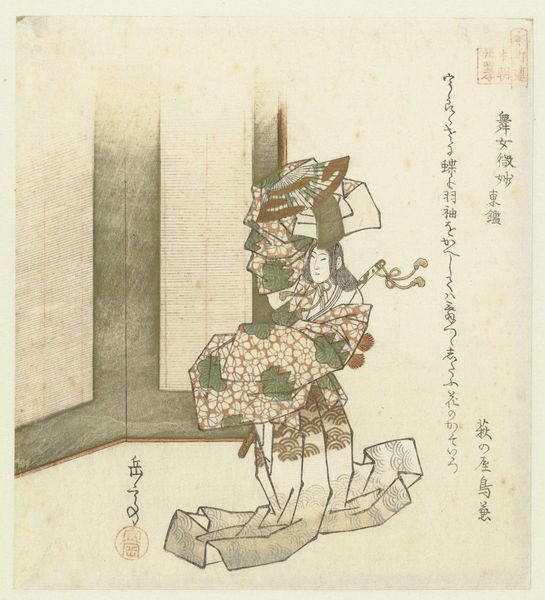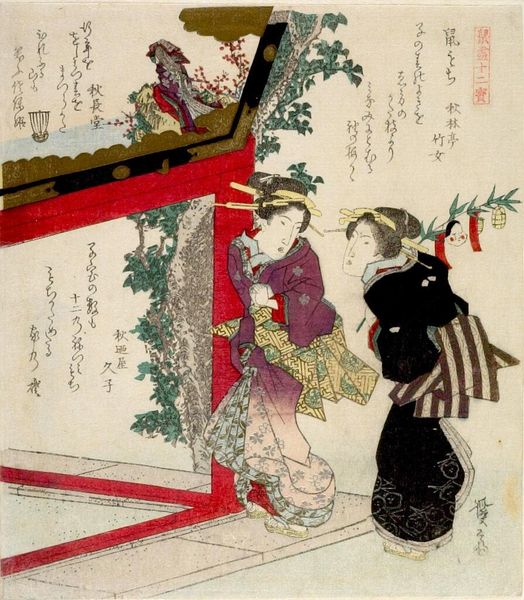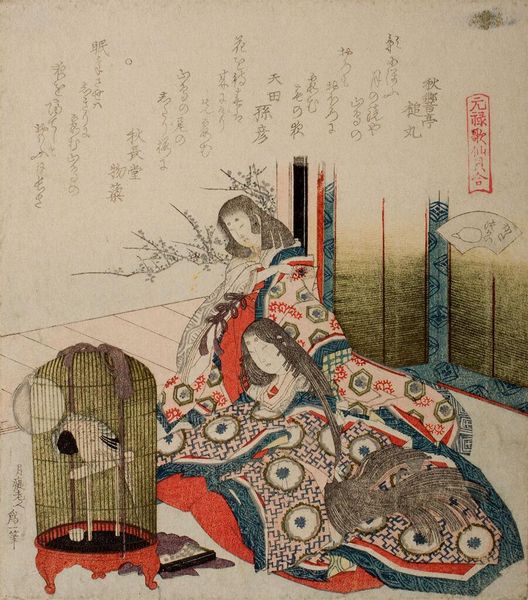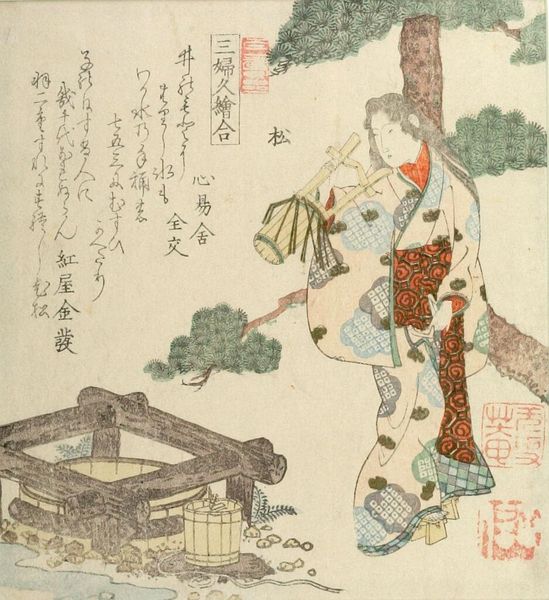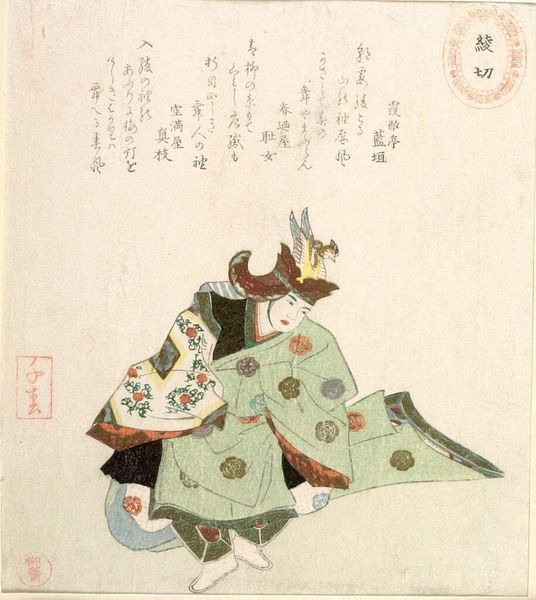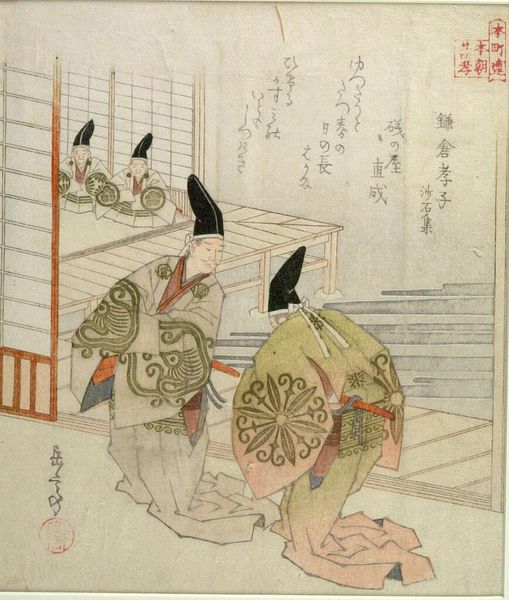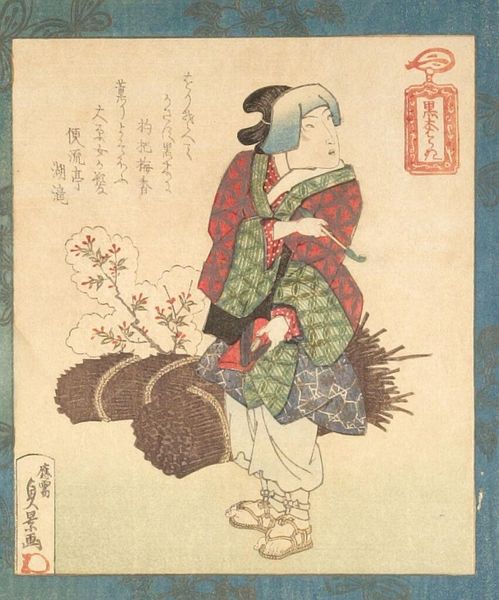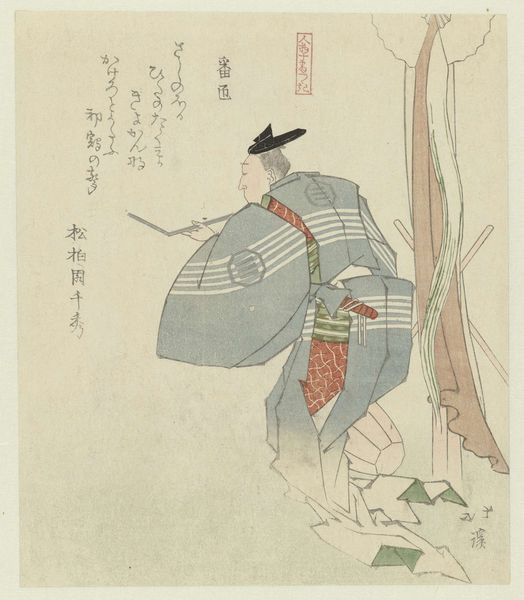
Dancing Girl MimyoÌ from the Mirror of the East (Maime MimyoÌ: Azuma kagami), from the series Twenty-Four Japanese Paragons of Filial Piety for the HonchoÌ Circle (HonchoÌren honchoÌ nijÅ«shikoÌ) c. 1821 - 1822
0:00
0:00
Dimensions: shikishiban: H. 20.5 Ã W. 18 cm (8 1/16 Ã 7 1/16 in.)
Copyright: CC0 1.0
Curator: Yashima Gakutei's woodblock print, "Dancing Girl Mimyo from the Mirror of the East," showcases a performer in elaborate costume. It is part of a series celebrating filial piety, but what does a dancing girl have to do with virtue? Editor: I was wondering that too! The figure seems weighed down by the garments and headdress. What's the connection to filial piety? Curator: The series connects virtuous acts to well-known figures, linking moral lessons with popular imagery. The choice of a dancer highlights the role of the entertainment industry in Edo society. The series subtly elevated the cultural status of performers. Editor: So, it's not just about the story, but about who is telling it and why? Curator: Precisely! Gakutei uses this subject matter to subtly challenge social norms, presenting performers as figures worthy of respect within the "floating world" or popular culture.
Comments
No comments
Be the first to comment and join the conversation on the ultimate creative platform.
